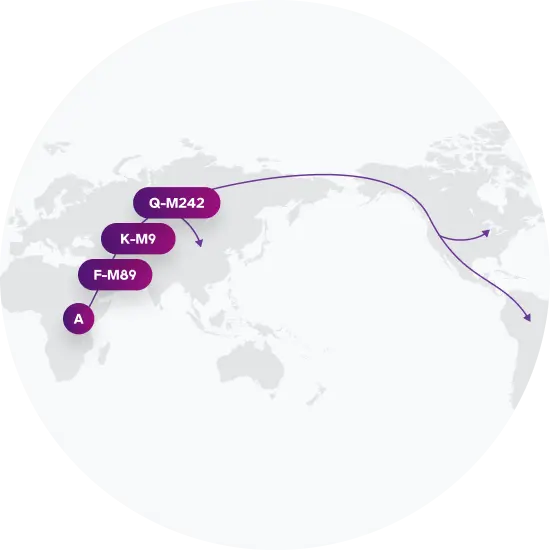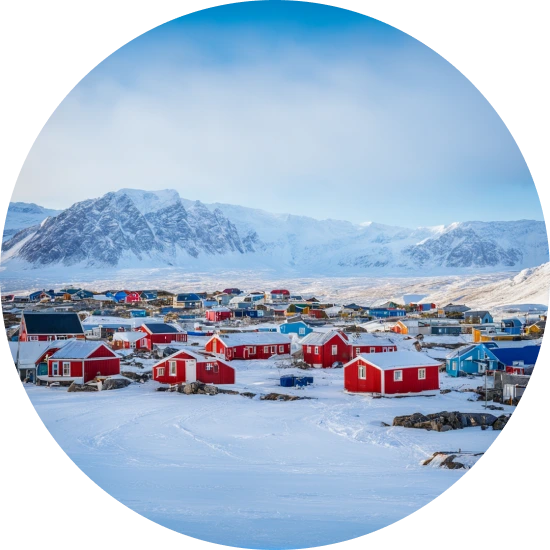Haplogroup Q-L713
What is Paternal Haplogroup Q-L713?
Haplogroup Q-L713, also known as Haplogroup Q-M242 (Y Chromosome Consortium long-form label), is a genealogical group of lineages defined by unique genetic markers present on the Y-chromosome. Your paternal haplogroup, or that of your father if you do not have a Y-chromosome, paints a picture of your ancient origins and the migrations of your ancestors. Although your paternal haplogroup reflects just one of your many ancestral lineages, it carries information about that lineage over tens of thousands of years.
Haplogroup Q-L713 is descended from haplogroup Q-M242. Among 23andMe research participants, haplogroup Q-L713 is commonly found among populations in the United Kingdom and Ireland.
It's important to note that your haplogroup doesn't define your current ethnic identity; rather, it provides an insight into your deep ancestry on the paternal side.
 Paternal Haplogroup Origins Q-M242
Paternal Haplogroup Origins Q-M242Top Surnames with Haplogroup Q-L713
For surnames with sufficient representation in the data, these percentages represent the frequency with which each surname is found in individuals exhibiting this genetic marker.
Haplogroup Q-L713 is linked to one of the earliest settlers of the New World Arctic region
In 2008, a group of researchers analyzed DNA from a 4,000-year-old man who lived in Greenland, and discovered that he belonged to haplogroup Q-F903, the parent branch of haplogroup Q1a. In fact, he was one of the earliest people who settled in the New World Arctic region, which includes northern Alaska, Canada, and Greenland. He belonged to a culture called the Saqqaq, which was part of the Arctic Small Tool tradition, a culture that used several different types of stone tips and blades to hunt prey both by land and sea.The researchers found that this 4,000-year-old man was most closely related to modern-day Siberians, and that he had blood type A+, brown eyes, dark skin and hair, shovel-shaped front teeth, dry earwax, and a body adapted to the cold climate in which he lived.

